
Chester Burton Atkins, also known as "Mr. Guitar" and "The Country Gentleman", was an American musician who, along with Owen Bradley and Bob Ferguson, helped create the Nashville sound, the country music style which expanded its appeal to adult pop music fans. He was primarily a guitarist, but he also played the mandolin, fiddle, banjo, and ukulele, and occasionally sang.
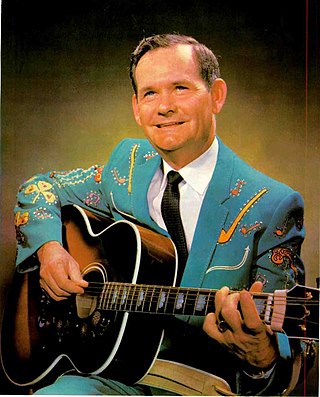
Hank Locklin was an American country music singer-songwriter. He had 70 chart singles, including two number one hits on Billboard's country chart. His biggest hits included "Send Me the Pillow You Dream On" and his signature "Please Help Me, I'm Falling". The latter also went to number eight on the Billboard Hot 100 pop music chart. Billboard's 100th anniversary issue listed it as the second most successful country single of the rock and roll era. It sold over one million copies, and was awarded a gold disc by the RIAA.

RCA Studio B was a music recording studio built in 1956 in Nashville, Tennessee by RCA Victor. Originally known simply as "RCA Studios," Studio B, along with the larger and later RCA Studio A became known in the 1960s for being an essential factor to the development of the musical production style and sound engineering technique known as the Nashville Sound. In the two decades the studio was in operation, RCA Studio B produced 60 percent of the Billboard magazine's Country chart hits. The studio closed in 1977.
Billy Norris Sherrill was an American record producer, songwriter, and arranger associated with country artists, notably Tammy Wynette and George Jones. Sherrill and business partner Glenn Sutton are regarded as the defining influences of the countrypolitan sound, a smooth amalgamation of pop and country music that was popular during the late 1960s and throughout the 1970s. Sherrill also co-wrote many hit songs, including "Stand by Your Man" and "The Most Beautiful Girl".
William Owen Bradley was an American musician, bandleader and record producer who, along with Chet Atkins, Bob Ferguson, Bill Porter, and Don Law, was a chief architect of the 1950s and 60s Nashville sound in country music and rockabilly.

Folk-Country is the major-label debut album by American country music artist Waylon Jennings, released in 1966 on RCA Victor. It is his first collaboration with producer Chet Atkins.

Leavin' Town is the second studio album by American country music artist Waylon Jennings, released in 1966 via RCA Victor. It peaked at #3 on the Billboard country albums chart.

Honky Tonk Heroes is a country music album by Waylon Jennings, released in 1973 on RCA Victor. With the exception of the final track on the album, "We Had It All", all of the songs on the album were written or co-written by Billy Joe Shaver. The album is considered an important piece in the development of the outlaw sub-genre in country music as it revived the honky tonk music of Nashville and added elements of rock and roll to it.

Wanted! The Outlaws is a compilation album by Waylon Jennings, Willie Nelson, Jessi Colter, and Tompall Glaser, released by RCA Records in 1976. The album consists of previously released material with four new songs. Released to capitalize on the new outlaw country movement, Wanted! The Outlaws earned its place in music history by becoming the first country album to be platinum-certified, reaching sales of one million.

I'll Help You Forget Her is a studio album by American country music artist Dottie West. It was released in November 1967 on RCA Victor and was produced by Chet Atkins. West's seventh studio effort, I'll Help You Forget Her was also her fourth studio offering in 1967. It included the single "Like a Fool", which became a major hit. The album itself would reach peak positions on national publication charts.

What I'm Cut Out to Be is a studio album by American country music artist Dottie West featuring the title song written by Red Lane. It was released in March 1968 on RCA Victor Records and was produced by Chet Atkins. It was West's eighth studio recording issued during her career. The album was a collection of new recordings and cover versions. The album did however reach peak positions on national publication charts at the time of its release.
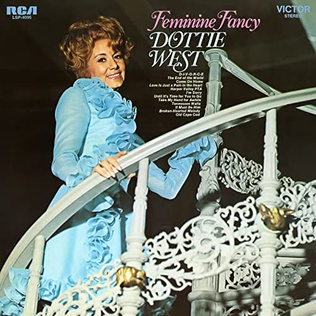
Feminine Fancy is a studio album by American country music artist Dottie West. It was released in December 1968 and was produced by Chet Atkins. The album was West's tenth studio recording and third to be released in 1968. It was the third album of West's career to not include any singles. Most of the album's 12 tracks were cover versions of country and pop hits of the era.
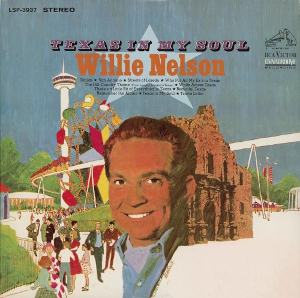
Texas in My Soul is the seventh studio album by country singer Willie Nelson. It was an early concept album that aimed to pay tribute to the State of Texas. The original album artwork features the Alamo, along with three San Antonio construction projects completed in 1968: the Tower of the Americas, HemisFair Arena and the HemisFair monorail system.
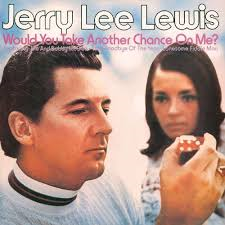
Would You Take Another Chance on Me? is an album by Jerry Lee Lewis that was released on Mercury Records in 1971.

RCA Studio A is a music recording studio in Nashville, Tennessee built and founded in 1964 by Chet Atkins, Owen Bradley and Harold Bradley. Originally known simply by the name "RCA Victor Nashville Sound Studios", along with the adjacent RCA Studio B, it became known in the 1960s for becoming an essential factor and location to the development of the musical production style and sound engineering technique known as the Nashville Sound.
Jerry Owen Bradley was an American music executive known for his role in country music. As head of RCA Records in Nashville from 1973 to 1982, Bradley was involved in the marketing and creation of the first platinum album in country music, Wanted! The Outlaws, which reached that mark in 1976. Bradley was inducted in the Country Music Hall of Fame in 2019.
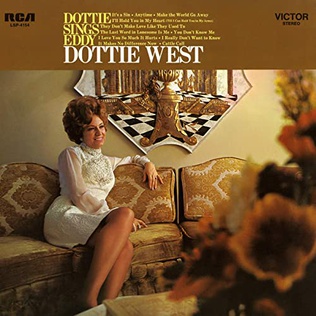
Dottie Sings Eddy is a studio album by American country music artist Dottie West. It was released in March 1969 on RCA Victor Records. The album was co-produced by Chet Atkins and Danny Davis. The project was a tribute to country artist, Eddy Arnold, whom West considered an inspiration in her career. West covered 11 tracks that were originally recorded by Arnold throughout his career.
"Stop the World (and Let Me Off)" is a song written and originally performed by Carl Belew. It was released as a single first by Belew in January 1958. It was later followed by competing versions by Patsy Cline and Johnnie & Jack. The latter duo's version became the first successful version of the song to be a hit. It was later covered a decade later by Waylon Jennings and then again by Susan Raye in 1974.
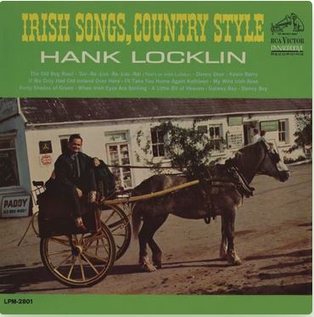
Irish Songs, Country Style is a studio album by American country singer–songwriter Hank Locklin. It was released in January 1964 via RCA Victor Records and was produced by Chet Atkins. Irish Songs, Country Style was a collection of traditional Irish songs recorded in a country fashion. It was one of several concept albums Locklin recorded during the course of his career. The album was largely inspired by his popularity in Ireland.

Hank Locklin Sings Hank Williams is a studio album by American country singer–songwriter Hank Locklin. It was released in September 1964 via RCA Victor Records. The record was co-produced by Chet Atkins and Bob Ferguson. The project was a tribute effort to Locklin's friend and fellow country artist Hank Williams. It was recorded with in an orchestral style that embodied Locklin's new Nashville Sound musical identity. It received mixed reviews from writers and critics.
















